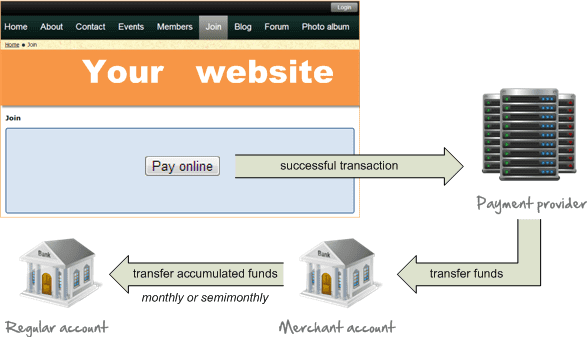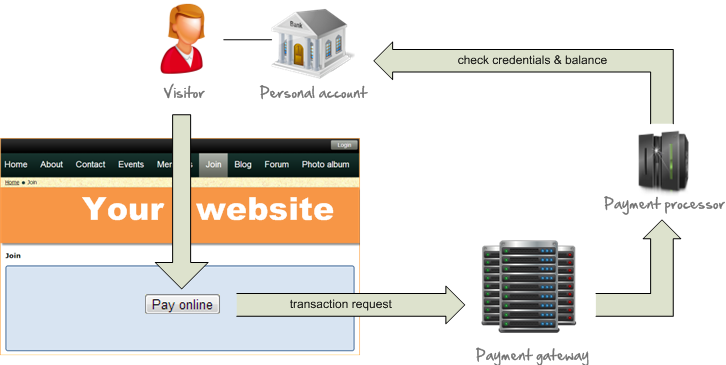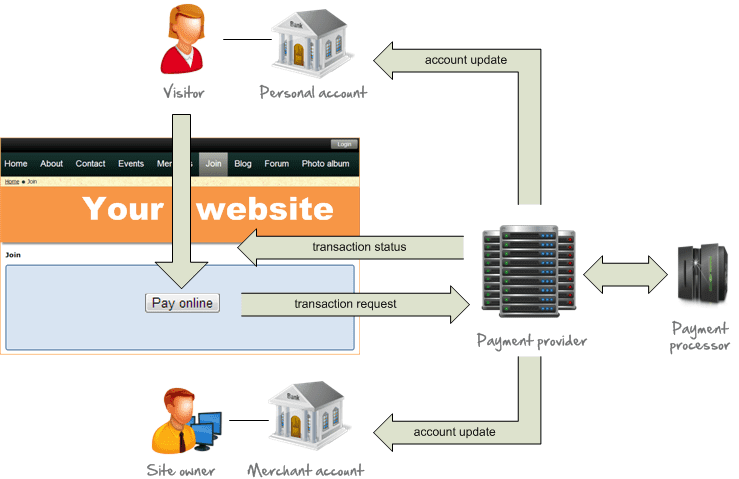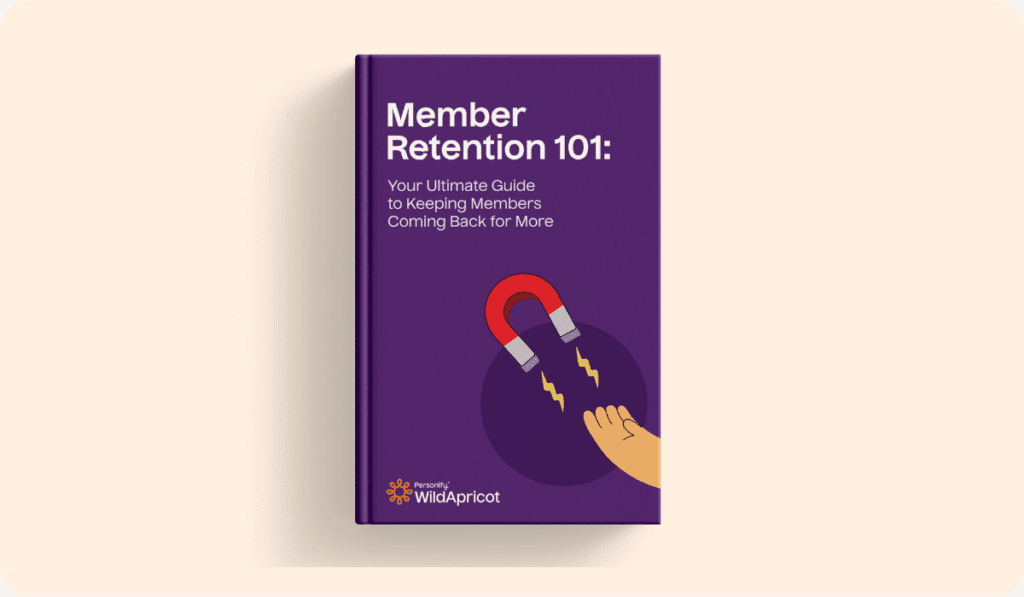Online payment services have become so commonplace, you may not give them much thought! Today, most banking and payments are done online— in fact, 78% of U.S. adults prefer to bank via mobile device or website.
If you’ve been manually processing payments, taking cash or cheques, you must be wondering: is there a better way? The great news is, yes! Today there are tons of options for online payment systems.
At its core, processing payments online is just about making it easier for your members, customers, or donors to support you in a way that’s convenient for them.
It is now essential to offer an online payment option, no matter your organization, if you want to be able to reach all of your potential customers, donors or members.
For example, Gary Rubens from the Ski Club of Washington DC began accepting online payments using WildApricot’s Membership Management Software this summer.
Within one month of promoting his club’s upcoming winter trip, all spots were filled and the club’s cash flow increased by $18,000, allowing Gary to cover all his deposits.
As Gary put it, “This is by FAR the earliest we have ever sold out a ski trip… Our President and Board are also tremendously impressed.”
Gary was able to reach people that may have not otherwise registered for the event had he not accepted online payments.
And he’s just one example of the thousands of organizations we work with every day that have seen incredible growth after accepting online payments.
We’ll give you the full picture about how online payment services work, why your organization needs one and the top providers for you to choose from. We’ve updated this list for 2023 so you have the freshest options!
Why are Online Payment Services Necessary?
In the digital age, almost everything is done over the Internet. Online payment services provide a number of advantages to your organization and your supporters, including:
- Meeting standards and expectations
- Speeding up the payment process
- Saving you time with automation
- Earning you more revenue
- Keeping payment information secure
Meet expectations
People are increasingly comfortable paying online. When members, customers or supporters are ready to sign up, register for an event, or make a donation, they want to do it quickly and easily. In fact, websites that don’t support online payment can be seen as being out of step.
Speed up the process
There’s no question—online payments are faster than manual. You don’t have to wait for a check to arrive or clear with the bank! The whole process—from submitting an online payment to updating your bank account—takes a matter of seconds.
The results? Better cash flow for your organization and immediate confirmation of transactions. Prospective members won’t have to wait to join your organization and participants will know right away whether they have successfully registered for an event.
Save time with automation
Automated payments save you the trouble of depositing a check and recording the payment manually. Once you set up online payments for your website, they are automatically processed in a snap! You don’t handle or store any credit card information. Any updates to member records are handled automatically.
Earn more revenue
Having the systems in place to process payments online builds trust with your supporters—and helps you reach more people! By making your services, membership or events available to a wider audience, you’ll bring in more revenue for your organization overall.
Keep payment information secure
Speaking of trust, there’s no better way to give your supporters confidence in your organization than having a secure online payment processor. Your members get the peace of mind that their dues, event registration or donation is being tracked properly and won’t get lost or missed.
What Are Online Payments? Understanding Online Payment Terminology
There are several terms that are used almost interchangeably when describing online payments:
- payment gateway
- payment processor
- payment provider
- payment service or payment system
- merchant account
Though they are distinct, with subtle differences, they all refer to a company, service, or application that acts as a financial middleman between your website and your customer, and between both of you and your bank accounts. Each facilitates the completion of online transactions, and the processing of online payments.
Payment gateway
A payment gateway is a service that receives the online payment request from your website and directs it to the payment processor. You can imagine the payment gateway as the digital equivalent of the point-of-sale machine you’d put your card in at the grocery store.
Payment processor
A payment processor is a service that validates the purchaser’s credit card details (e.g., those of your member, donor, or supporter) and checks if they have sufficient funds in their account to cover the payment.
If the customer has sufficient funds, the transaction is authorized, and the funds are transferred from the customer’s account. The status of the transaction is transmitted back to the payment gateway which then sends a status message to your website. The payment processor company may also provide you with the equipment you need to accept in-person payments, such as a card swiper.

Payment provider
A payment provider (or payment service provider) is the company that operates the payment gateway or payment processor services. Some will operate both.
Payment service or payment system
Where a payment provider offers multiple types of payment gateways – with different features and pricing – each type is referred to as a payment service or payment system. For example, PayPal is a payment service provider that offers a number of payment services or payment systems such as PayPal Payflow Pro and PayPal Express Checkout (and here’s a great list if you’re looking for a Paypal alternative, or keep reading to see our review of various online payment systems at the bottom of this post).
Merchant account
A merchant account is another important term to understand. When an online transaction is successfully completed, the funds are transferred from the purchaser’s account to your merchant account, a special kind of bank account used exclusively to hold funds received from credit and debit card transactions. To accept online payments, you usually need to set up a merchant account with your payment provider. Funds accumulating in your merchant account are transferred to your organization’s bank account on a regular basis.

Payment gateway vs payment processor: what’s the difference?
Although the terms payment gateway and payment processor are sometimes used interchangeably, they actually refer to different parts of the payments process.
In an online transaction, the payment gateway is what authenticates the customer’s payment, whereas the payment processor is the mechanism that communicates the transaction between the bank and the merchant.
This distinction is important because, in a physical transaction, only the payment processor is needed. In a virtual transaction, however, an extra layer of authentication is necessary.
However, to make it even more confusing, the payment gateway and payment processor are sometimes combined into a single service known by either name. Some companies will manage both sides of the process, whereas others only handle one.
So, as you read through our list of payment processors, keep this simple but vital distinction in mind.
How the Online Payment Process Works
To fully understand how online payments work, let’s follow a transaction from start to finish. In this way, you can see how your website, your member or donor, and your payment service provider all interact.
To get started with online payment processing, you typically need:
- a merchant account – though some payment systems (such as PayPal) do not require a merchant account or can provide you with one
- an account with a payment service provider
- a web page with a button (e.g. Join, Donate, Buy) that initiates the transaction process – you can use code provided by your service provider or specialized shopping cart software
Once you’ve set up your web page and connected it to an online payment system, visitors to your site will be able to pay online for products or services. The online payment process begins when the visitor clicks the button to pay online for membership fees or an event registration, or to make a donation or purchase something from your online store.
On the online payment form that appears, the visitor enters their credit card information and submits the transaction request. Depending on your online payment service provider, the form may appear on your website, or your purchaser may be redirected to a form on your service provider’s website.

The transaction request, along with the credit card information entered by the purchaser, is securely transmitted to the payment gateway operated by your payment service provider. The information is encrypted so that no one – including you – can view the purchaser’s personal and financial information.
Your payment service provider will then use a secure payment processing service – either their own or one provided by another company – to verify the purchaser’s credit card details and confirm whether the purchaser has sufficient funds to complete the transaction.

If the purchaser’s credentials are valid and there are sufficient funds to complete the transaction, your payment service provider will initiate a transfer of funds from the purchaser’s bank account to the merchant account associated with your website, and notify your website that the transaction has been approved. Depending on how your website is set up, that information can be used to automatically update records on your site (e.g., update your membership management or event registration database).

If the transaction is declined for any reason – such as invalid credentials or insufficient funds – no funds will be transferred, but status information will still be sent to your website.
The Top 11 Best Online Payment Systems For Your Organization
Now that we’ve gone through the anatomy of an online transaction, here are a few payment systems that you can use for your organization’s online payment processing needs.
We’ve included reasons why you might choose one processor over another, as well as an overview of the fees they charge per transaction.
(Note that this may not be exact for all providers, as some credit card companies will pass through additional fees, as will transactions that come through from outside your country, so it’s meant only as a comparison.)
With that in mind, here are the top eleven online payment systems for all your payment processing needs (and if you’re a nonprofit, check out our full guide to nonprofit payment processors here).
1. WildApricot Payments
WildApricot Payments is WildApricot’s own payment processing system, powered by 8am AffiniPay, a payment gateway that specializes in payment solutions for associations.
8am AffiniPay has over a decade of experience in the payment industry, and an A+ rating from the Better Business Bureau. Both 8am AffiniPay and WildApricot Payments are fully PCI compliant and were built specifically for nonprofit transactions, meaning they support recurring donations and offer free support and PCI compliance, as well as no set up or monthly fees.
Plus, while some online payment systems require you to transfer your money to your bank account, with WildApricot Payments the full transaction amount is deposited directly into your bank account without you lifting a finger.
If you’d like to set up online payments for your organization, start a risk-free 60 day trial of WildApricot’s Membership Management Software
Costs: 2.9% + $0.30 per Credit/Debit transaction
2. Stripe
Stipe is the most flexible payment processor on the market. Whether you’re a large nonprofit with different donation streams, or a small club/association, Stripe’s API will easily link your payments anywhere needed. You can even transfer from LLC to corporate status!
Costs: 2.9% & $0.30 per Credit/Debit transaction + 0.4% per recurring bill
3. Apple Pay
For online payments, Apple Pay has the most seamless payment options on the market. Users can instantly pay using their existing Apple Wallets with the touch of a button (or fingerprint scan). Note that they are not a payment provider, though, so you’ll need to be set up through one of the others in this list if you want to accept other kinds of payments.
Costs: No additional fees charged on top of normal credit transaction fees (1.5 – 5% average in USA)
4. Dwolla
Dwolla has a wide variety of integrations and is very flexible. If you require multiple payment structures like installment payments, multiple-stage interests, and varying recurring charges, Dwolla can handle it all. Best of all, their fee structure is very competitive.
Costs: $25 per month + 0.5% per transaction
5. Due
Due is a feature-packed payment processor that’s ready for 21st century needs. Due gives users access to virtual wallets, secure transactions, and even time tracking software. If you’re looking for a broad solution with different forms of payment forms, Due is a great choice.
Costs: 2.8% + 2.9% & $0.30 per Credit/Debit transaction
6. Square
Square was the first in the game to introduce a credit card swiper that could be attached to a cell phone, paired with an app, and process transactions. Their technology has only improved with advanced tap features, as well as fully inclusive software to safely and securely process your transactions.
Costs: 2.65% per card transaction, 2.9% + 30 cents per paid Square Invoice or online transaction, 3.4% + 15 cents per manually entered transaction and $0.10 per Interac debit tap sales
7. PayPal
PayPal is one of the most widely used payment providers, which is their biggest edge. Chances are most of your potential supporters and customers already have accounts with PayPal, and can make payments with ease. PayPal also takes all security concerns onto themselves, meaning you won’t be storing any credit card information (like most other payment processors).
Costs: 2.9% + $0.30 per Credit/Debit transaction
8. Authorize.net
As the oldest and most wide-spread payment solution on this list, Authorize.net can do pretty much anything you’ll ever need payment-processing wise. With Authorize.net, you’ll never have an unsupported payment type since they stay up to date on trending payment methods, and even won an award for their outstanding API integrations.
Costs: $25 per month + 2.9% & $0.30 per transaction
9. Freshbooks
Freshbooks is not just a payment processor, it’s a powerful accounting software used by millions of businesses around the world. You won’t find clearer financial reporting in the industry since they are known for amazing user experience, and supportive customer service. If you’re looking for the ultimate reporting tool and payment processor in one, Freshbooks has you covered.
Costs: 2.9% flat fee
10. Moneris
Similar to Freshbooks, Moneris gives customers not just a payment processor, but modular data reporting and even inventory tracking. Moneris’s edge is their outstanding 24/7 customer service with ratings through the roof. They pride themselves on reliability, and being there when you need them most.
Costs: $19.95 CAD per month, + 2.75% per Credit transaction
If you need more help on selecting an online payment provider after looking through this list, check out our guide to doing just that.
11. Regpack
Regpack integrates registration and payment processing on any website. The system allows your organization to easily collect payments on your website to manage your programs, events, donations, and more.
Its payment processing features aim to meet any of your registration needs, like allowing groups to pay for an event under one account, enabling automatic discounts based on known data and registration information, and even facilitating custom automated billing plans.
Coupled with a full suite of data management tools, like email communication, reporting tools, and filtering options: Regpack is a one-stop-shop to manage your clients, programs, and payments.
Costs: As low as 1.5%
The Software Thousands of Membership Organizations Are Using to Process Payments
If you run a membership organization (like a club or association), there’s a software solution that can save you time and money by automating all member dues, new member registrations and event fees.
That software is called Membership Management Software, which is an all-in-one management solution designed for small to medium-sized nonprofits. Here’s what else it can do for you:
- Instantly process online payments, fees, and donations (it even has its own payment processor you can use)
- Give you a professional, easy to build website where you can host a news section, notices, resources, member directory, event calendar and more.
- Setup online volunteer, member, and event registration pages.
- Maintain a full contact database that’s easy to search, filter, and update.
- Improve member communication through automated invoices, emails, newsletters, and maintenance requests.
- Provide you with financial reports, analytics, and membership summaries in seconds.
- Accept payments through a mobile app.
Membership Management Software eliminates the need for multiple systems and the processing work needed to maintain them all by condensing everything into one, easy-to-use solution.
If you’d like to set up this software for your organization, I’d encourage you to start a free trial of WildApricot. WildApricot is the #1 rated Membership Management Software used by over 20,000 organizations around the world.
“As a small non-profit and an all volunteer board, we do not have the capability to run our membership sign ups and training registrations, by hand. We now have automated payments, registrations, renewals and are able to communicate in an instant with our membership. It is also very nice to have all of this with a user-friendly website in one place!”
– DeeDee LeBaron, Oregon Employment and Training Association









![The Ultimate Guide to Membership Management Software For Nonprofits [2025 Edition]](https://b2993016.smushcdn.com/2993016/wp-content/uploads/2024/02/Main-Blog-Thumbnails-2025-11-06T180717.949-1024x717.png?lossy=1&strip=1&webp=1)

